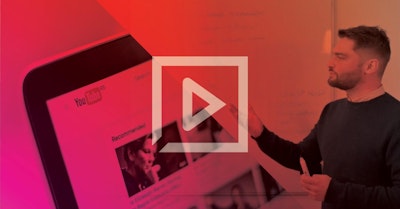
By Lara Koenig, Global Product Lead – Performance
There have been many articles detailing what steps buyers can take to control their supply paths – and many marketers are taking active steps, consolidating their SSPs over the last two years with IAB releases such as ads.txt and sellers.json helping illuminate which partners publishers have direct or reseller routes with.
These reference files are really useful in identifying who is an authorized supply partner, but not necessarily who is an optimal supply partner.
We believe there are a few additional considerations to keep in mind when evaluating your supply routes, beyond publisher authorization.
Here are four of the key considerations you should bear in mind for optimizing your buy and sell side relationships to drive transparency and control across activations.
1) Optimized SSP <>DSP integrations
Not all integrations are equal across buy and sell side partners.
Some DSPs such as The Trade Desk, for example, maintain high integration standards from supply partners – including consistent identity flags included in bid requests, as well as enforcing many optional OpenRTB objects that other DSPs may ignore. This helps buyers reach high value audiences and environments, and increases targeting efficacy. It also gives them a lot of unbiased, scalable choice in who they buy through – though it does mean there’s potential for duplication and inefficiency if unchecked.
At the same time, many DSPs operate a sell side business as well (Google, Verizon, Roku, Xandr as examples). This may impact the supply allocation a buyer will see across a campaign. DSPs which also operate sell side businesses help to provide buyers efficient, direct routes to owned and operated supply, but risk reducing exposure to other high value third party SSP supply partners through underlying SPO decisioning hidden behind a line item.
An early step buyers can take in informing an SPO strategy is to conduct exploratory analysis to understand which of their DSPs currently uses non-transparent SPO algorithms or network auction duplication filtering – and may be making decisions on their behalf. Once you’ve done that, you can explore if there may be higher efficiency paths available outside of that specific DSP<>SSP footprint. Similarly, the availability of buyer tools to control supply decisions vary drastically by DSP – buyers can ask DSPs for SPO related roadmap considerations.
2) Identity integrations
As browsers and operating systems continue to evolve how they surface audience identifiers (like cookies or MAIDs), publishers will play a much greater role in how buyers can reach first party audiences. Publisher and SSP direct integrations with identity resolution providers such as LiveRamp, UID 2.0 or ID5 are increasingly required to deliver future-proofed programmatic audience addressability.
Even in today’s cookie ecosystem, alternative IDs such as IDL have shown to drive 70% more reach to a first party audience compared to cookies, helping combat non-optimal cookie-syncing in the auctions and combatting short cookie expiry and refresh lifecycles.
One step buyers can take to future proof identity in their supply partnerships is to start testing alternative IDs in their campaigns to drive early learnings and familiarize themselves with the buying workflows.
3) Minimal and transparent intermediary reliance
Beyond the final authorized seller in a transaction (illuminated by IAB initiatives ads.txt and sellers.json), there’s another data field which can be helpful to buyers – the SupplyChain object. This provides buyers insight into all of the sellers that played a role in a given auction.
Intermediaries play a larger role in today’s auction mechanics than most buyers assume – with positive intermediaries helping to provide large scale SSPs access to unique placements, niche environments, or unique creative units through aggregators and wrappers. Negative intermediaries, meanwhile, drive increased costs through arbitraged inventory when more direct paths may be available. To give you an example, across one advertiser, we saw 50% of media spend had more than one seller in the transaction, with the longest path being 10 unique sell side hops in a single transaction.
Buyers should begin a conversation with their SSPs on how intermediaries currently play a role in their investment – and take steps to help control for intermediary allocation with refined auction packages from SSPs filtered for buyer declared preferred paths.
4) Tools for publishers
Publishers, and the ad space they offer, are what help make the internet free and open. Any buy and sell side partnership needs to consider the value add to publishers. SSPs that build tools for both the buy and sell side (such as contextual offerings, publisher audience capabilities, and so on) can help buyers better direct their demand to performant environments while maximizing yield for the media owners.
In consolidation and automation conversations buyers should consider which of their chosen supply vendors have high publisher preference and have roadmaps built for both buy and sell side tools.
Your next wave of SPO starts now
These four considerations can help you start thinking about how to structure your next wave of SSP consolidation, increase media efficiencies, and future proof for tomorrow’s identity landscape.
To summarize, you need to:
- Understand DSP priorities – A single DSP will have a partial view on supply efficiencies, and may often exhibit bias or behaviors on a buyer’s behalf behind the line item settings. Understanding this decisioning can help you inform corrective or more efficient supply allocation.
- Understand intermediaries – Some supply chain data is available to buyers today, but is fragmented and impartial based on partners. Close relationships with SSPs can help you understand more about their investments and take control on downstream supply path decisioning.
- Think about identity alongside efficiency- The path to supply has an impact on your audience reach – start thinking about alternative IDs as a vehicle for audience reach across Publisher partners.
- Get close to publishers – Media owners will play a continued and increasingly critical role in tomorrow’s advertising landscape – buyer decisions informed by transparency and close partnerships with publishers will be built to last.
- 1.1


